Hydrangea Frize Melba
Among the worthy representatives of paniculate hydrangea, the variety “Fraise Melba” is distinguished. The new ruby-colored crop immediately caught the fancy of professional flower growers and amateur gardeners.The decorative nature of the bush and the spectacular combination of burgundy and white petals on one inflorescence make the plant a desirable specimen for growing in the garden.
| Content:
|
This is interesting! The result of ten years of work by French breeder Jean Reno was demonstrated to the public in 2014. The new selection instantly became a global sales leader.
Video review of hydrangea Frize Melba:
Description of paniculate hydrangea Frize Melba
The culture forms a lush, tall bush with a dense crown. The shoots are thick, strong, and do not droop. They grow strictly vertically. In spring they are red in color, and by autumn they turn brown. The plant does not need a garter; even at a young age it independently holds large inflorescences. The bush has very weak lateral branching. Hydrangea Frize Melba is characterized by abundant flowering. Each shoot is crowned with a huge inflorescence.
The leaves are dark green with spiny edges. As they mature, the leaf blades take on a boat shape, with serrated edges bent upward. They grow from shoots on coral petioles.
|
Purple bloom with white tip |
The panicles are aligned, pyramidal in shape with a pointed apex. They consist of small sterile flowers arranged in a dense cascade. The petals are carved at the edges and curl slightly, giving the inflorescence a lush shape.
Flowers ripen gradually. On one bush, inflorescences of varying degrees of maturity and different colors are simultaneously observed.
For information! In damp, cold summers, the buds bloom late.A characteristic feature is that in waterlogged areas the leaves turn red.
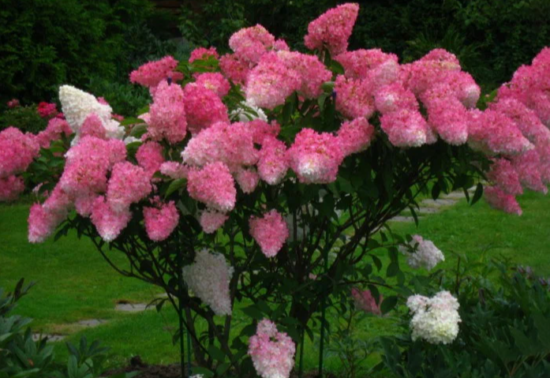
Main characteristics of the variety
|
Growing and caring for hydrangea Frize Melba
For information! Today, only 3 nurseries in Russia have a license to sell “Fraise Melba” hydrangea.
Planting hydrangeas in open ground
Depending on the planting location and soil conditions, there is a difference in the color of the flowers. When placing hydrangeas in partial shade, the buds are white for a long time and begin to turn pink by mid-September. The flowering is not as bright and rich as when planted in an open sunny place.
A purchased plant in a pot is planted from spring, when consistently warm weather sets in, until early autumn.Planting of seedlings with an open root system is carried out in mid-spring so that the root system takes root and gets stronger over the season.
A lover of sourness, hydrangea Frize Melba grows well in acidic and slightly acidic soil. The optimal composition of the planting pit is:
- humus – 1 part;
- peat – 2 parts;
- garden soil - 2 parts;
- sand – 1 part;
- several handfuls of vermiculite, hydrogel.
So that immediately after planting the plant receives the elements necessary for growth and development, 80 grams are added to the hole. superphosphate, 30 gr. potassium sulfate.
|
Autumn planting |
The step-by-step landing procedure is as follows:
- 2 weeks before planting, dig a planting hole. If a seedling is grown from a cutting, a hole measuring 30x30x30 is sufficient. For an adult purchased seedling, a larger pit is prepared (50x50x50).
- A 10 cm layer of small broken brick and expanded clay is poured onto the bottom as drainage.
- The hole is filled 1/3 with soil mixture and watered.
- When the moisture is absorbed, a seedling is placed vertically in the middle of the hole and the roots are straightened.
- The hydrangea seedling is covered with soil, leaving the root collar on the surface. The earth around the trunk is pressed down.
- Water generously with 2 buckets of water.
- The tree trunk circle is mulched with humus, sawdust, pine litter, and peat.
Don't forget to read:
Rules for caring for hydrangea Frize Melba
Undemanding Frize Melba grows and blooms well with minimal care. Hydrangea responds to proper agricultural technology and constant care with rich growth and lush, long-lasting flowering.
Watering
Hydrangea (hydrangea) translated means “vessel of water”.The plant needs frequent, abundant watering, especially in dry summers and in high areas. The culture is not afraid of close groundwater. In rainy weather, watering is stopped to prevent rotting of the roots.
Top dressing
Hydrangea is fertilized twice a month according to the general scheme for applying fertilizers for garden crops. In the spring, a green pet needs nitrogen; in the summer-autumn period, potassium-phosphorus fertilizers are needed.
In early spring, add ammonium nitrate and superphosphate (1 tbsp per bucket of water). Responds favorably to the application of liquid manure and humus. Mineral fertilizers alternate with organic ones.
Trimming
The procedure directly affects the intensity of hydrangea flowering. Carry out 2 times per season in spring and autumn:
- Sanitary. Carry out in the fall, after flowering and in early spring. Remove weakly developed shoots damaged by frost. In autumn, faded inflorescences are cut off, capturing the two upper buds.
- Formative. It is carried out in the spring, before the buds open. With low pruning (3 buds and below), it becomes capricious and does not have time to bloom. Normally accepts pruning by 5 buds.
- Thinning. It is carried out simultaneously with the formative one. Remove branches that grow inside the bush and thicken the stems.
Reproduction methods
Hydrangea Frize Melba reproduces well both by layering and cuttings. From one bush per season you can get seedlings for a large hedge.
Layerings
A strong one-year-old shoot located close to the ground is selected from the mother plant. A cut is made on the stem into a half ring, and this place is pressed to the soil with pins or a stone. The area is sprinkled with soil and watered periodically. The top of the shoot is directed vertically, tied to a peg.Successfully rooted cuttings are cut off from the mother plant the next season and planted in a permanent place.
|
Rooting cuttings |
Cuttings
Hydrangea is a conveyor belt for obtaining cuttings. In spring, healthy shoots are cleared of leaves and cut into pieces with one, two, or three internodes. The chopped pieces are placed in a moist nutrient soil mixture. The plantings are covered with plastic cups or film and ventilated periodically by removing the cover. In such conditions, rooting occurs in 2-3 weeks. They are moved into open ground when the seedlings are strong enough.
|
Rooting cuttings |
Frize Melba takes root so well that it is not necessary to treat the planting material with a growth stimulant.
Frost resistance of Frize Melba and preparation for winter
High resistance to frost (up to -35°C) allows adult specimens to overwinter without shelter. To protect the root system from freezing, in the fall the bush is hilled up high and the layer of mulch in the tree trunk circle is increased up to 20 cm thick. Tree bark, dry sawdust, peat, and humus are used.
In regions with harsh winters, the crop is covered. The shoots are pressed to the ground, covered with leaf litter, and covered with spruce branches. The top is covered with agrofibre, the edges of the fabric are pressed to the ground with bricks. You can make a frame around the plant using boards or special arcs. Spunbond thrown over them will be covered with snow in winter. Such a shelter will serve as reliable protection in severe frosts.
|
Winter shelter option |
Do not miss:
Reviews from gardeners about hydrangea Fraise Melba
Frize Melba is an ideal plant that occupies a leading position among paniculate hydrangeas.The variety is relatively new, but thousands of fans have already fallen in love with the plant and never tire of singing its praises to the culture:
“And I really liked Fraze Melba. It turns red very quickly and beautifully.
This is the first year it’s blooming for me.”
“Very beautiful variety. Simple branches, large hats. The color is the most vibrant of all panicle hydrangeas. A small minus is late flowering. Better in warmer areas. Or have more than one variety.”
Use in landscape design
Landscape designers and amateur florists talk about the Frize Melba hydrangea as a new star that has lit up among paniculate crops. A bush with wine-colored inflorescences is used to frame garden paths and decorate park areas.
|
A lush, tall shrub will become the highlight of any site. The green pet looks like a precious decoration in single and combined plantings. It contrasts well next to other representatives of paniculate hydrangea of various colors. |
|
Cereal crops look great with Fraise Melba hydrangeas. |
|
In the company of evergreen conifers, there is an amazing contrast of emerald green mass and purple inflorescences. |
|
A plant formed on a trunk looks like a miracle of unearthly beauty. |
Don't forget to read:
You might be interested:
- Panicle hydrangea Pinky Promise with descriptions, photos and reviews from gardeners ⇒
- Hydrangea Sunday Fries: description, photos and reviews ⇒
- Paniculata hydrangea “Silver dollar”: description, photos and reviews from gardeners ⇒
- Hydrangea paniculata Skyfall with description, photos and reviews ⇒
- Description of the 30 best varieties of paniculate hydrangeas with photos and names ⇒
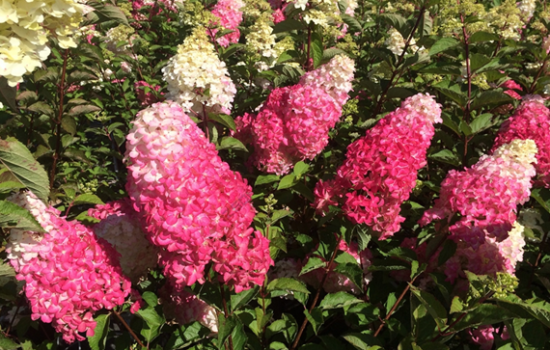
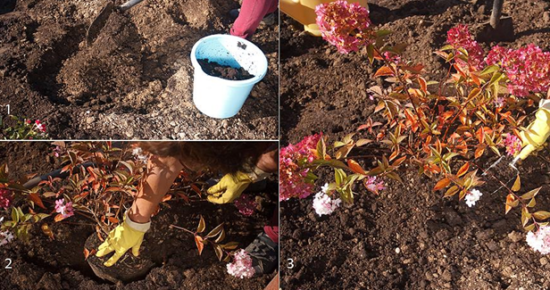

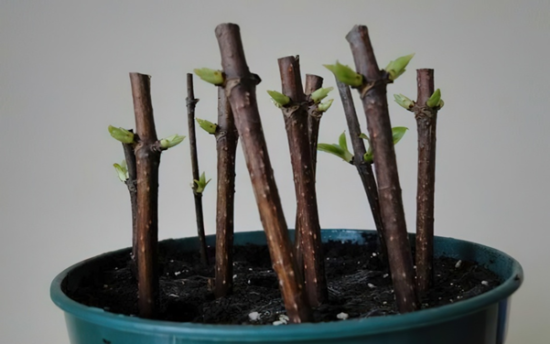
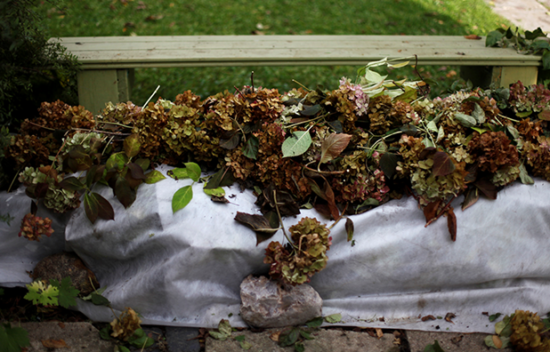
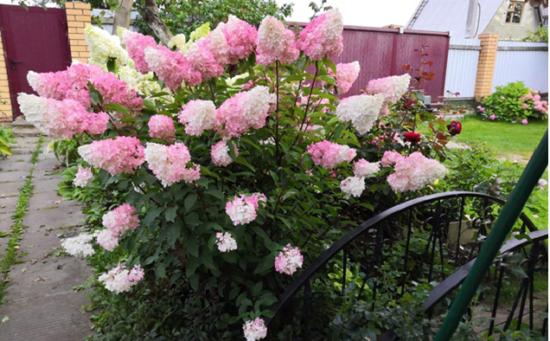
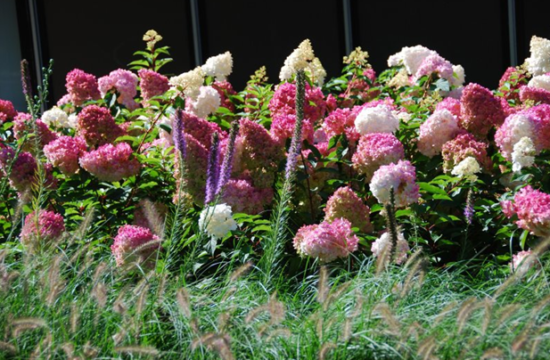

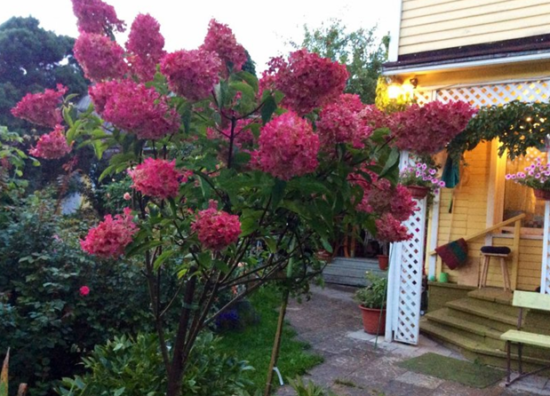

 CUCUMBERS NEVER GET SICK, I'VE BEEN USING ONLY THIS FOR 40 YEARS! I SHARE A SECRET WITH YOU, CUCUMBERS ARE LIKE THE PICTURE!
CUCUMBERS NEVER GET SICK, I'VE BEEN USING ONLY THIS FOR 40 YEARS! I SHARE A SECRET WITH YOU, CUCUMBERS ARE LIKE THE PICTURE! You can dig a bucket of potatoes from each bush. Do you think these are fairy tales? Watch the video
You can dig a bucket of potatoes from each bush. Do you think these are fairy tales? Watch the video
 How our fellow gardeners work in Korea. There is a lot to learn and just fun to watch.
How our fellow gardeners work in Korea. There is a lot to learn and just fun to watch. Eye trainer. The author claims that with daily viewing, vision is restored. They don't charge money for views.
Eye trainer. The author claims that with daily viewing, vision is restored. They don't charge money for views. A 3-ingredient cake recipe in 30 minutes is better than Napoleon. Simple and very tasty.
A 3-ingredient cake recipe in 30 minutes is better than Napoleon. Simple and very tasty. Therapeutic exercises for cervical osteochondrosis. A complete set of exercises.
Therapeutic exercises for cervical osteochondrosis. A complete set of exercises. Which indoor plants match your zodiac sign?
Which indoor plants match your zodiac sign? What about them? Excursion to German dachas.
What about them? Excursion to German dachas.